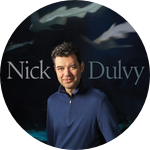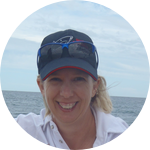About This Project
I am studying sawfish in Papua New Guinea (PNG) to assess their current status in the suitable habitats they are likely to occur. The only data on sawfish in PNG are spot records and in unpublished survey reports. Surveys conducted in the lower Ramu River (Madang Province) in the 1970s and 1980s indicate that sawfish were common in these waters. This project will investigate their current status in this river system to direct conservation efforts on sawfish in PNG.
Ask the Scientists
Join The DiscussionWhat is the context of this research?
Sawfish are one of the most threatened groups of cartilaginous fishes in the world and are known to be extinct from a number of locations throughout their range. Four species are known to occur in the Australasian region: the Narrow Sawfish, Green Sawfish, Dwarf Sawfish and Largetooth Sawfish. They are found in freshwater rivers, associated estuaries and coastal marine waters. They are highly susceptible to fishing as well as inshore development and land-based activities such as mining. In Papua New Guinea, there are vast areas of prime habitat for sawfish but no information on their current status. Recent surveys of prawn trawl catches and small-scale coastal fisheries has found that all four species are being caught. Anecdotal evidence suggests they are common in certain areas of PNG.
What is the significance of this project?
Papua New Guinea represents a "missing link" in our understanding of current sawfish populations in the Indo-Pacific region. Due to the logistical issues of travelling into remote parts of PNG where sawfish are found, there is very limited data available. Obtaining data on fishery catches and abundance of sawfish at various locations in PNG is critical for our understanding of these endangered species. The presence of extremely susceptible species like sawfish can be important indicators of a healthy ecosystem. Surveys of the Ramu River will enable comparison with survey data from the 1970s and anecdotal evidence from the 1990s. This will be combined with data obtained from a larger project in southern PNG and enable the current status of sawfish in PNG to be assessed for the first time.
What are the goals of the project?
This project aims to survey villages along the lower Ramu River and adjacent coastal areas to determine whether sawfish are caught, how regularly, and the size and species caught. It will also enable for some field sampling (non-destructive gillnetting) to determine the presence of sawfish in areas near villages which encounter sawfish most regularly. Educational tools, such as an identification kit, basic information and safe handling practices, will be circulated to villages being surveyed. If possible, suitable villages will be asked to continue collecting data on sawfish catches following our surveys to provide a longer time series of data.
Budget
The budget outlined for this project will allow for surveys of the lower Ramu River in northern PNG. A larger project is focusing on sawfish populations in the southern parts of PNG (Gulf of Papua, Fly River, etc.) and this funding will allow for an additional site to be investigated. Another ongoing research project on marine sharks and rays of PNG will provide equipment and contacts for this project to be successful. It should be noted that PNG is a logistically difficult place to conduct this kind of research and costs of boats, cars, accommodation and internal flights are high. This is often regardless of quality but reflect the limited infrastructure available outside of the main towns and cities.
Endorsed by
Meet the Team
William White
My research is focused on the ecology and taxonomy of sharks and rays in the Indo-Pacific region. The majority of my research in the last 15 years has been on shark and ray fisheries in Indonesia and Papua New Guinea. My first taste of working with sharks and rays was during my PhD in Shark Bay, Western Australia. This led to my involvement in a number of projects on shark and ray fisheries in Indonesia. Over a 12 year period, I conducted 31 surveys of Indonesian fish markets. The Indonesian work proved difficult as many of the species we encountered were new to science. This paved the way for the start of my taxonomic career. Since 2005, I have described more than 50 new species of sharks and rays, published 3 books and more than 100 journal articles. I have supervised a number of Honours, Masters and PhD students from Thailand, Australia and Papua New Guinea. I began a research project on the sharks and rays of Papua New Guinea in 2014 which has already resulted in the discovery of a number of new shark and ray species and rediscovery of a number of shark species.
Project Backers
- 14Backers
- 14%Funded
- $689Total Donations
- $49.21Average Donation



